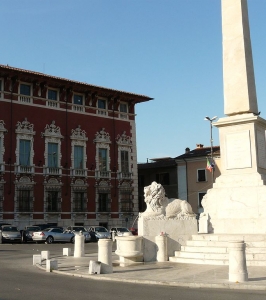Massa and Carrara
The sacred majesty of the profile of the Apuan Alps dominates the landscape of north–west Tuscany and bears the visible signs of an economy tied to the exploitation of marble quarries. In the bold shadow of these mountains, the cities of Carrara and Massa have played out their histories among the blocks of stone, intertwined at the beginning of the nineteenth century with that of Elisa Baciocchi, who became their sovereign.
The activities connected to marble working in Carrara have always travelled in step with the development of the arts, in part thanks to the vision of the rulers who succeeded one another in the governing of the city. Countless artists went there to select the best materials for their works, a practice given further incentive when the Malaspina, the Lords of the city, founded the Accademia di Belle Arti. And it was precisely during the government of Elisa Baciocchi, Duchess of Massa and Marchesa of Carrara from the year 1806, that important measures were passed giving economic help to the marble workers and the Accademia received new stimulus, renewed in terms of its teachings and its seat. The future Grand Duchess of Tuscany also left an indelible mark on Massa, where the medieval centre, renovated in the sixteenth century under the Malaspina, came to be further modified during Elisa’s duchy with the renovation of the seigneurial palazzo and the controversial opening of the facing piazza to emphasize the importance of the centre of power.
During Elisa Baciocchi’s government, the territories of Massa and Carrara were also provided with an efficient road system that is still perfectly functioning today: the Via Friedland, which reaches Sarzana from Massa and Carrara through the mountains, was inaugurated in 1809 and in 1812 the new postal road connecting Lucca and Pietrasanta was completed.










